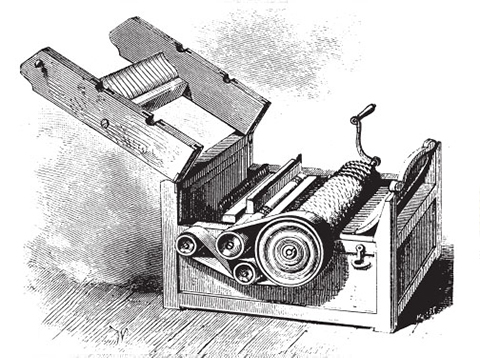March 14, 1794. Eli Whitney received a patent for the cotton gin.
The cotton gin was made up of a wire screen and small wire hooks that were meant to pull the cotton through it. Brushes attached to the machine were designed to remove the loose cotton and prevent jams. The gin’s purpose was to more easily separate cotton fibers from the seeds, a laboring task if done by hand.

Whitney, a Connecticut man, designed the cotton gin to help enslaved people on cotton plantations. The idea was that these persons could put the cotton through the gin instead of subjecting their fingers to the grueling process of cleaning cotton perfectly. Whitney believed that his invention would help slavery disappear. He was wrong.
New technology, like the cotton gin, helped Southern agriculture thrive because it supposedly simplified the job of the slave. In many ways, they did. Yet, these new technologies, the expansion of slavery, and the abolishment of the Atlantic slave trade all mixed together to create more valuable slaves.[1]
As slaves became worth more money, those holding these slaves became wealthier. It is safe to say that the South had an economic boom in the early nineteenth century because the country’s happenings mixed together to benefit masters and make the lives of slaves more difficult. The plantation system was able to thrive because it did not require large amounts of skilled labor. The work that the majority of slaves had to do was tasks that required little to no training or real skill.[2] In inventing the cotton gin, Eli Whitney believed he would help those he did not have the power to free lead simpler and healthier lives. However, what he really did was cause the institution of slavery to expand and thrive.
[1] Michael L. Conniff, Thomas Joseph Davis, and Thomas J. Davis, Africans in the Americas: A History of the Black Diaspora (St. Martin’s Press, 1994), 172–73.
[2] Conniff, Davis, and Davis, 48–49.

Leave a Reply